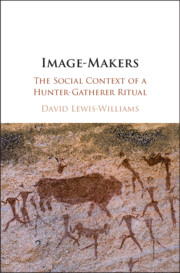Book contents
- Image-Makers
- Image-Makers
- Copyright page
- Dedication
- Contents
- Plates
- Figures
- Acknowledgements
- Note on Spelling
- Note on Pronunciation
- The Bleek and Lloyd Archive References
- Introduction
- 1 A Go-Between
- 2 An Invisible Network
- 3 The Narrative Problem
- 4 Patterns of Participation
- 5 Integrated Idiosyncrasy
- 6 Threads of Light
- 7 A State of !aia
- 8 Images, Image-Makers and Changing Society
- Epilogue: San Imagery Today
- References
- Index
- References
References
Published online by Cambridge University Press: 18 May 2019
- Image-Makers
- Image-Makers
- Copyright page
- Dedication
- Contents
- Plates
- Figures
- Acknowledgements
- Note on Spelling
- Note on Pronunciation
- The Bleek and Lloyd Archive References
- Introduction
- 1 A Go-Between
- 2 An Invisible Network
- 3 The Narrative Problem
- 4 Patterns of Participation
- 5 Integrated Idiosyncrasy
- 6 Threads of Light
- 7 A State of !aia
- 8 Images, Image-Makers and Changing Society
- Epilogue: San Imagery Today
- References
- Index
- References
- Type
- Chapter
- Information
- Image-MakersThe Social Context of a Hunter-Gatherer Ritual, pp. 172 - 196Publisher: Cambridge University PressPrint publication year: 2019



